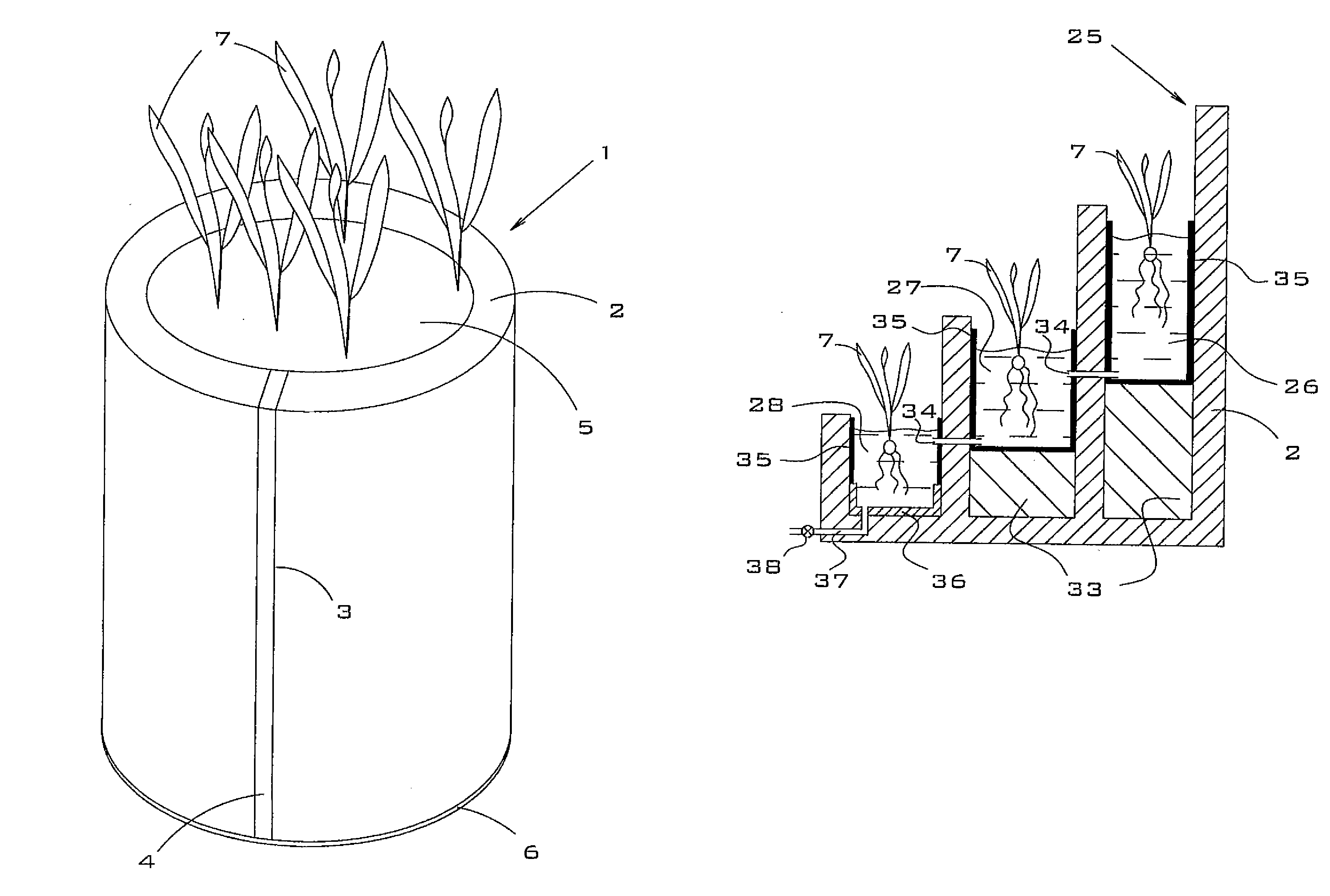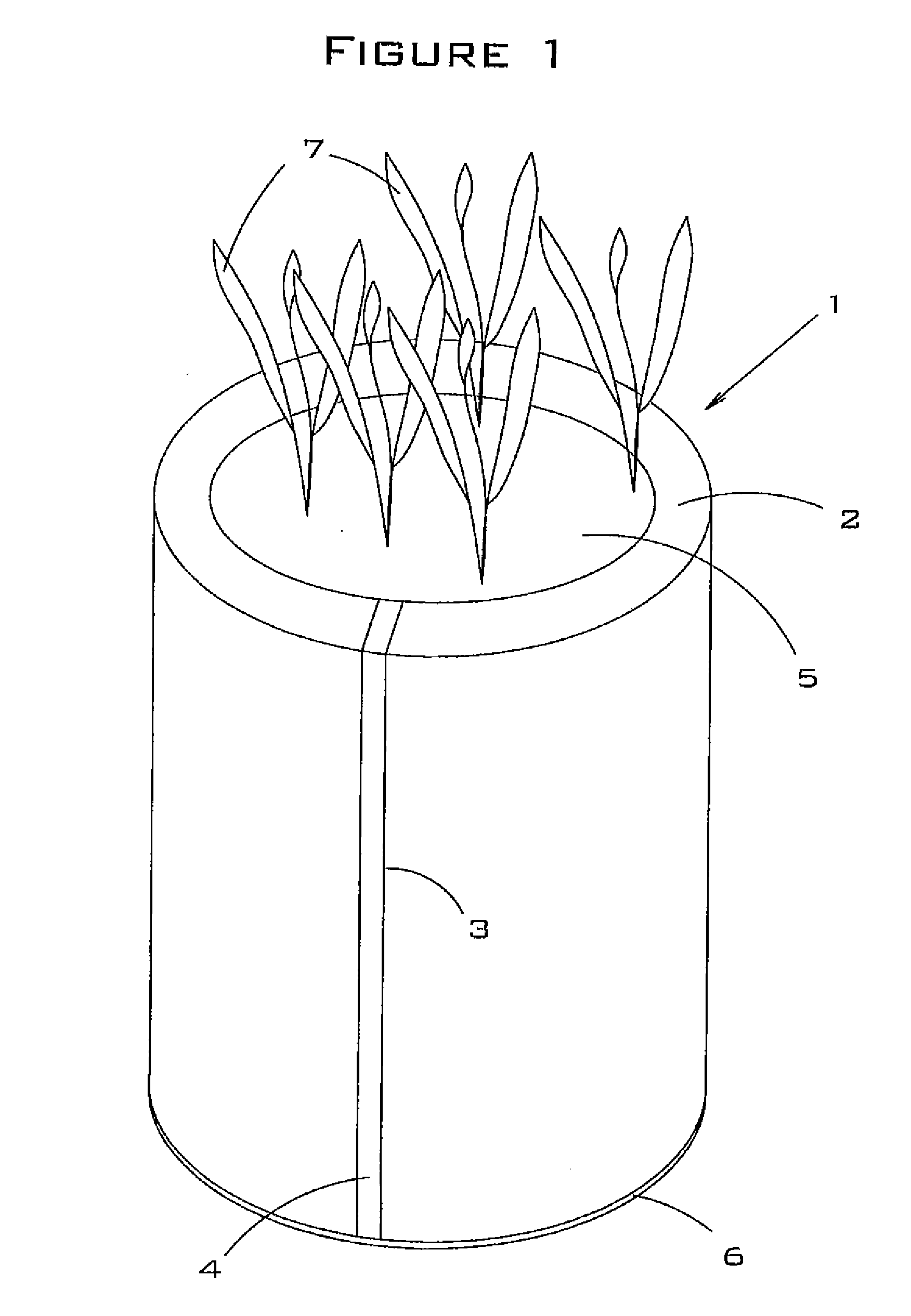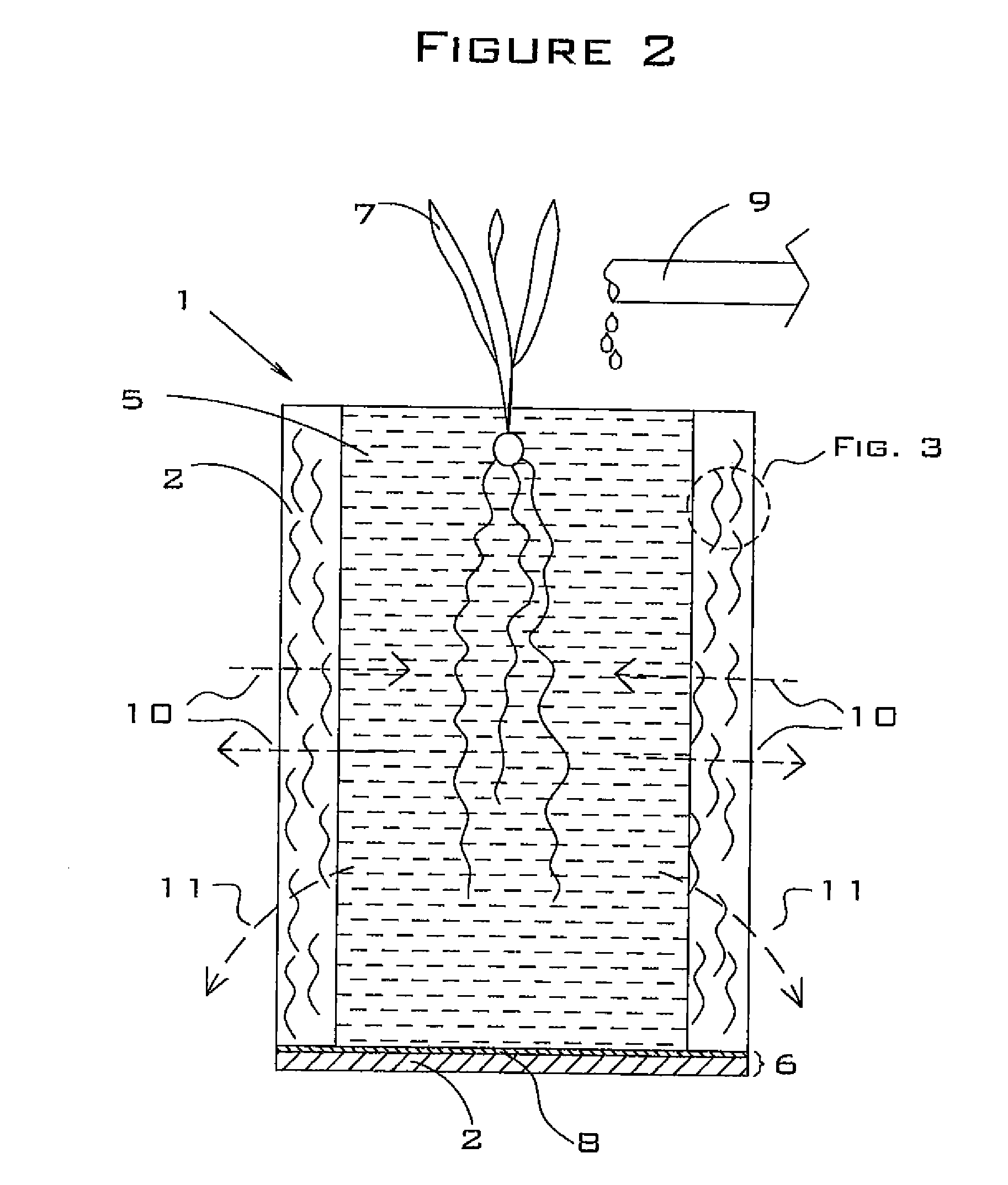Raised bed planter with biomimetic exoskeleton
- Summary
- Abstract
- Description
- Claims
- Application Information
AI Technical Summary
Benefits of technology
Problems solved by technology
Method used
Image
Examples
first embodiment
[0145]FIG. 1 is a perspective view of the present invention. In this embodiment, the raised bed planter 1 is comprised of an exoskeleton 2 with a seam 3, bonding agent 4, interior fill 5, and a bottom layer 6. Plants 7 are shown growing within the raised-bed planter 1. Bonding agent 4 is used to connect and seal the adjoining edges of exoskeleton 2.
[0146]FIG. 2 is a cross-section side view of the first embodiment of the present invention, which shows the raised-bed planter 1 comprised of an exoskeleton 2, interior fill 5, plants 7, a bottom layer 6 comprising a weed barrier 8, and a bonding agent (not shown) that bonds the bottom layer 6 to the exoskeleton 2. An external water supply 9 is used to supply water to the raised-bed planter 1. Arrows 10 represent gases that pass through the permeable exoskeleton 2 from the atmosphere to the interior fill 5 and from the interior fill 5 to the atmosphere. One of these atmospheric gases is oxygen, which is necessary for plant root survival. ...
second embodiment
[0154]FIG. 4 is a perspective view of the raised-bed planter 1, in which the planter is comprised of a short outer section 17 and a long inner section 18. Each individual section 17 and 18 is similar to the embodiment shown in FIG. 1 in that it is comprised of an exoskeleton 2 and interior fill 5. This embodiment is advantageous for certain applications because it provides for two growing environments, thereby allowing different types of plants to be grown simultaneously. For example, the outer section 17 may be heavily watered to support wetland plants, while the inner section 18 may be lightly watered to support desert plants. This embodiment also comprises an optional impermeable bottom cup 19 around the bottom portion of the outer section 17. The purpose of the bottom cup 19 is to provide a zone of water-saturated soil in the bottom of the outer section 17, which may be desirable for some plants that prefer a saturated root zone. The bottom cup 19 may alternately be installed wi...
PUM
 Login to View More
Login to View More Abstract
Description
Claims
Application Information
 Login to View More
Login to View More - Generate Ideas
- Intellectual Property
- Life Sciences
- Materials
- Tech Scout
- Unparalleled Data Quality
- Higher Quality Content
- 60% Fewer Hallucinations
Browse by: Latest US Patents, China's latest patents, Technical Efficacy Thesaurus, Application Domain, Technology Topic, Popular Technical Reports.
© 2025 PatSnap. All rights reserved.Legal|Privacy policy|Modern Slavery Act Transparency Statement|Sitemap|About US| Contact US: help@patsnap.com



